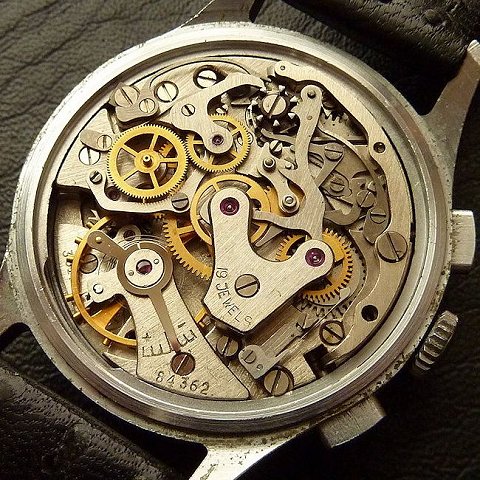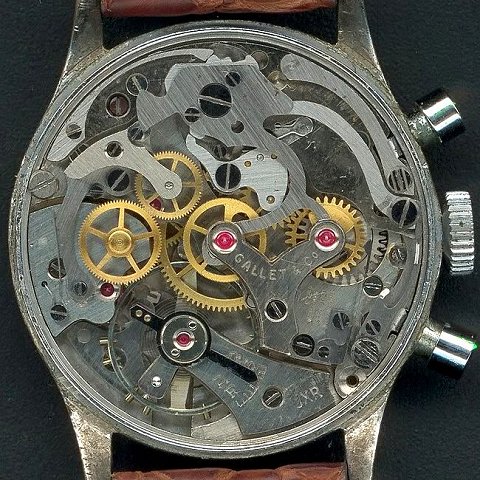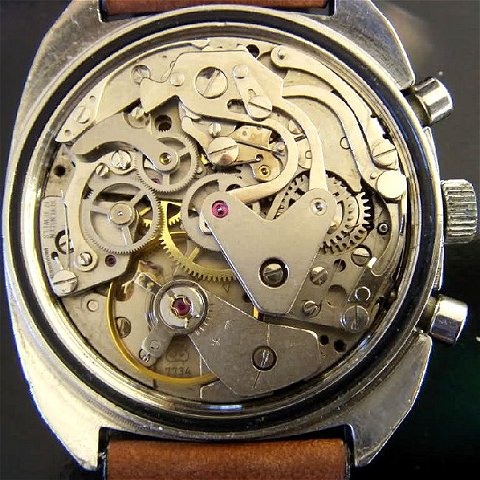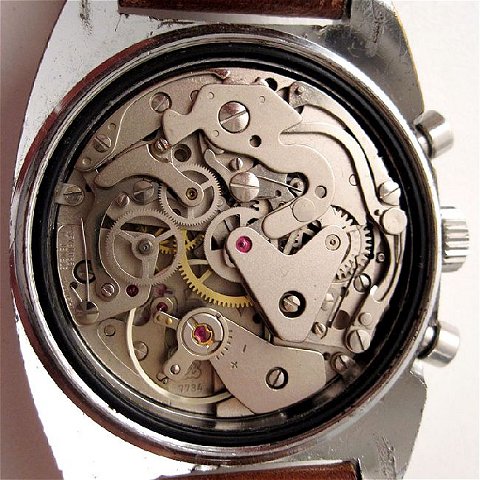History of the Poljot cal. 3133 Movement
Like the Poljot cal. 3017 movement that preceded it, the Poljot cal. 3133 movement was based on a movement produced initially by the Venus watch company in La Chaux-de-Fonds, Switzerland. The 3017 was based on the Venus cal. 150 which featured the older column or ratchet design chronograph mechanism, while the Poljot cal. 3133 can be traced to the Venus cal. 188 which features a cam-lever mechanism first patented by Landeron in 1940. The cam-lever mechanism was easier to produce as the lever could be stamped out of a piece of steel, whereas back in the day milling the the column wheel was labour-intensive and thus could not be produced en masse.
Poljot cal. 3017 with ratchet wheel

Venus cal. 188 with cam lever

The Venus company produced the cal. 188 from 1949 up until they withdrew from the marketplace in 1966. Another Swiss company, Valjoux, bought the tools and rights to produce the Venus cal. 188 and continued to produce a slightly modified version of the chronograph, rebranded cal. 7730, through 1968. At this point, Valjoux further refined the movement as cal. 7733, and cal. 7734 with date function. The early production Valjoux cal. 7734 most resembles what we know the initial production of the Poljot cal. 3133 to be.
Early Valjoux cal. 7734 with ajustable excenter on the reset hammer

Late Valjoux cal. 7734 with improved hammer and fly-back lever

Modifications to the chronograph reset function illustrated above were never adopted by Poljot.
In 1974, a year after production began on the new cal. 7750 automatic chronograph, Valjoux discontinued production of the cal. 7734 and sold the tools, and presumably the rights to produce the chronograph, to Poljot. The ETA cal. 7750 is still in production to this day , while the production of the MakTime cal. 3133 ended in 2011.
Some of the initial modifications made by Poljot to the cal. 7734 included a taller main plate, third wheel plate with jewel bearing, jewelled chronograph gears, smaller and faster running balance with shock protection, and quickset date mechanism. Curiously, the initial version of the Poljot cal. 3133 utilized the older version of the 7733/34 reset function(hammer, fly-back lever) that was produced between 1968-1971.
Mechanically, not too many modifications have been made to the Poljot/MakTime cal. 3133 over the last thirty plus years. Notable changes where a) an improved mainspring in 1987, b) an improved metal alloy balance wheel in 1992, and c) seemingly lower-quality levers and eccentrics from the late 1990s on. For all of the other minor changes, see my "Guide to Determining the Age and Originality of a Poljot cal. 3133 Chronograph".
Poljot continued to produce the cal. 3133 chronograph up until the end of 2004, when the MakTime company purchased the Poljot cal. 3133 machinery, relocated the equipment to their factory in south-east Moscow, and continued production starting in June 2005. After only a few short years, low-sales/profits and out-dated equipment forced an end to production in 2011. The MakTime company produced the cal. 3133 for a handful of companies including Moscow Classic, Volmax (Aviator, Sturmanskie, Buran), Juri Levenberg (Pilot, Strela), Poljot-International, PoinTec (Junkers, Zepplin), Poljot-Chonos (The President), as well as their own in house brands (MakTime, MWG).
As of July 2013, new movements continue to be available in remaining retail stocks, however, some of the more popular cal. 3133 chronographs, such as the Zeppelin models, are now nearing extinction.